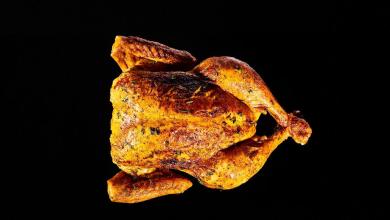Winter storm warning issued for Cascade mountains in Washington
A winter storm warning has been issued for the Cascade Mountains in Whatcom, Skagit, Pierce and Lewis counties of Washington state, starting at 5 p.m. Monday, April 7, and ending at 5 p.m. Tuesday, April 8, the National Weather Service in Seattle said.
Up to a foot of snow is expected, and the storm could make travel difficult. People who need to be on the road should take precautions such as keeping a flashlight on hand, packing food and water, and preparing for possible power outages, the NWS said.
The warning includes Mount Baker, Mount Rainier, Cystal Mountain, White Pass, Paradise, Ashford and Longmire.
In northwest Washington, a flood watch was issued for Mason County from 2 p.m. Tuesday, April 8, to 11 a.m. Wednesday, April 9, the NWS said.
A winter storm warning was issued for parts of Washington state, with heavy snow expected in the Cascades of Whatcom, Skagit, Pierce and Lewis counties, according to the National Weather Service in Seattle. The warning was expected to remain in effect from 5 p.m. April 7 to 5 p.m. April 8. Screenshot of National Weather Service website by Andre Byik
What is a winter storm warning?
A winter storm warning means a local National Weather Service office is confident that a storm will “produce heavy snow, sleet or freezing rain and cause significant impacts,” according to the NWS.
“Each office knows the local area and will issue Warnings, Watches or Advisories based on local criteria,” the NWS website states. “For example, the amount of snow that triggers a ‘Winter Storm Warning’ in the Northern Plains is typically much higher than the amount needed to trigger a ‘Winter Storm Warning’ in the Southeast.”
A view of Mount Rainier in Washington state January 1, 2012. REUTERS/Robert Sorbo
How to prepare for a winter storm
These are some ways to prepare for storms that can produce blinding and wind-driven snow and freezing rain before they arrive, as stated on the Washington State Department of Health’s website:
-
Listen to your radio or television for winter storm forecasts and other information;
-
Prepare your home for cold weather. Install storm windows. Insulate outside walls, attics and crawl spaces. Wrap pipes, especially those near cold outer walls or in attics or crawl spaces. Repair leaks in the roof, around the doors and in the windows;
-
Have appropriate cold weather clothing available;
-
If you have a kerosene heater, refuel your heater outside and remember to keep it at least three feet from flammable objects;
-
Make sure your fireplace functions properly;
-
Have rock salt and sand on hand for traction on ice;
-
Fill your gas tank before the snow starts falling.
What to do during a winter storm
Here are some ways to minimize the risk of winter storms when they arrive, as stated on the Washington State Department of Health’s website:
-
Wear several layers of loose-fitting, lightweight, warm clothing rather than one layer of heavy clothing. Wear mittens rather than gloves. Wear a warm, woolen cap;
-
Do not drive unnecessarily;
-
Reduce the temperature in your home to conserve fuel;
-
Heat only the areas of your home you are using. Close doors and curtains or cover windows and doors with blankets;
-
Use alternative heat methods safely. Never use a gas or charcoal grill, hibachi or portable propane heater to cook indoors or heat your home;
-
Never use a generator indoors or in a garage or carport;
-
Be careful when shoveling snow. Do not overexert yourself;
-
Be sure to eat regularly. Food provides calories that maintain body heat;
-
Watch for signs of frostbite and hypothermia – slurred speech, disorientation, uncontrollable shivering, stumbling, drowsiness and body temperature of 95 degrees Fahrenheit or less;
-
If you become trapped outside, get out of the wind and stay dry. Build a lean-to or snow cave if nothing else is available. Do not eat snow; it will make you too cold;
-
Bring dogs and cats inside during cold weather.
What to do in a vehicle during a winter storm
Staying off the road is recommended during a winter storm, but here are some ways drivers can increase their chances of rescue and survival, as stated on the Washington State Department of Health’s website:
-
Make sure someone knows where you are going. Stay on the main roads;
-
If you must stop, remain inside the vehicle. Use a bright distress flag or your hazard lights to draw attention to your vehicle;
-
If trapped in a blizzard, clear your tail pipe and run your engine and heater for 10 minutes every hour. Open your window slightly;
-
During night hours, keep the dome light on in the car so rescue crews can see your vehicle;
-
Keep an emergency kit in your vehicle. Include a three-day supply of water and non-perishable food that can be eaten without being cooked. Include a blanket or sleeping bag for each passenger, a flashlight, cell phone, shovel, sack of sand or kitty litter, booster cables, flare, coffee can with lid, and toilet paper.
This article originally appeared on Kitsap Sun: Winter storm warning issued for Washington Cascades
Source link



